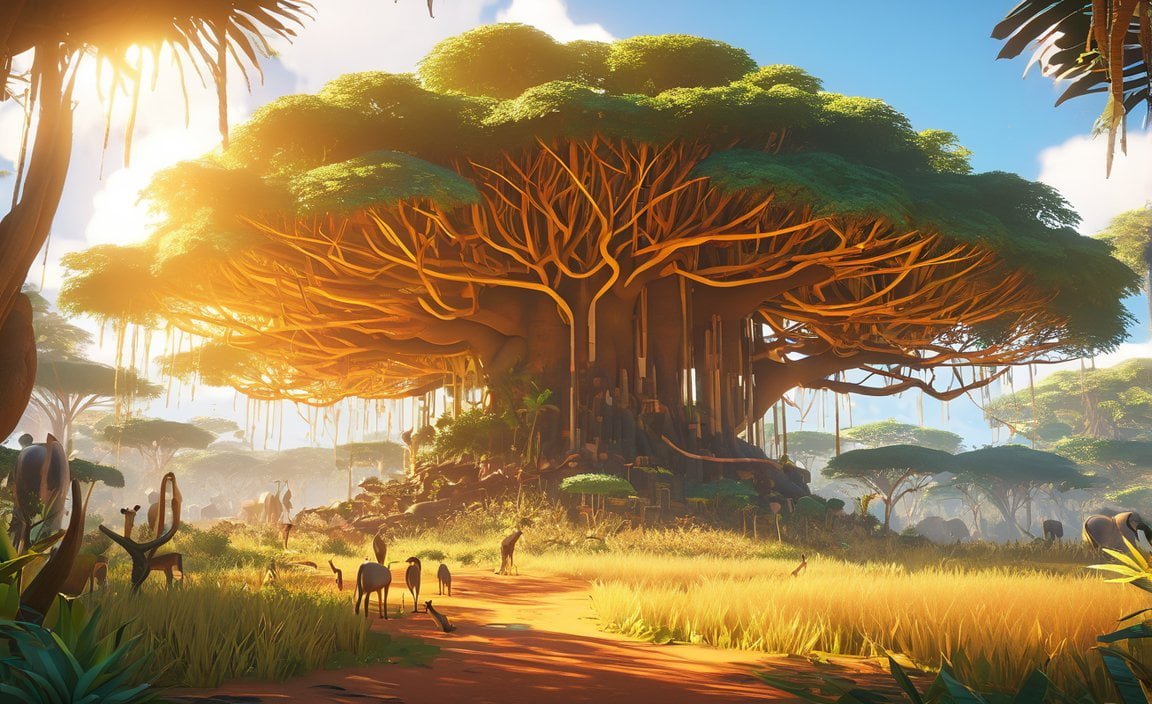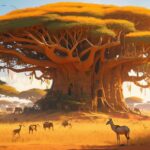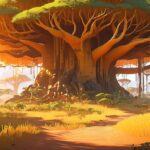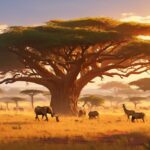Discover 10 Intriguing Tropical Savanna Biome Facts and embark on a thrilling journey into one of Earth’s most captivating ecosystems. From the unique relationship between grazing animals and grasses to the marvels of migratory birds and the mesmerizing adaptability of plants to fire, this article unveils a wealth of fascinating details about the tropical savanna biome. Join us as we delve into these ten intriguing facts and unlock the secrets of this remarkable habitat.
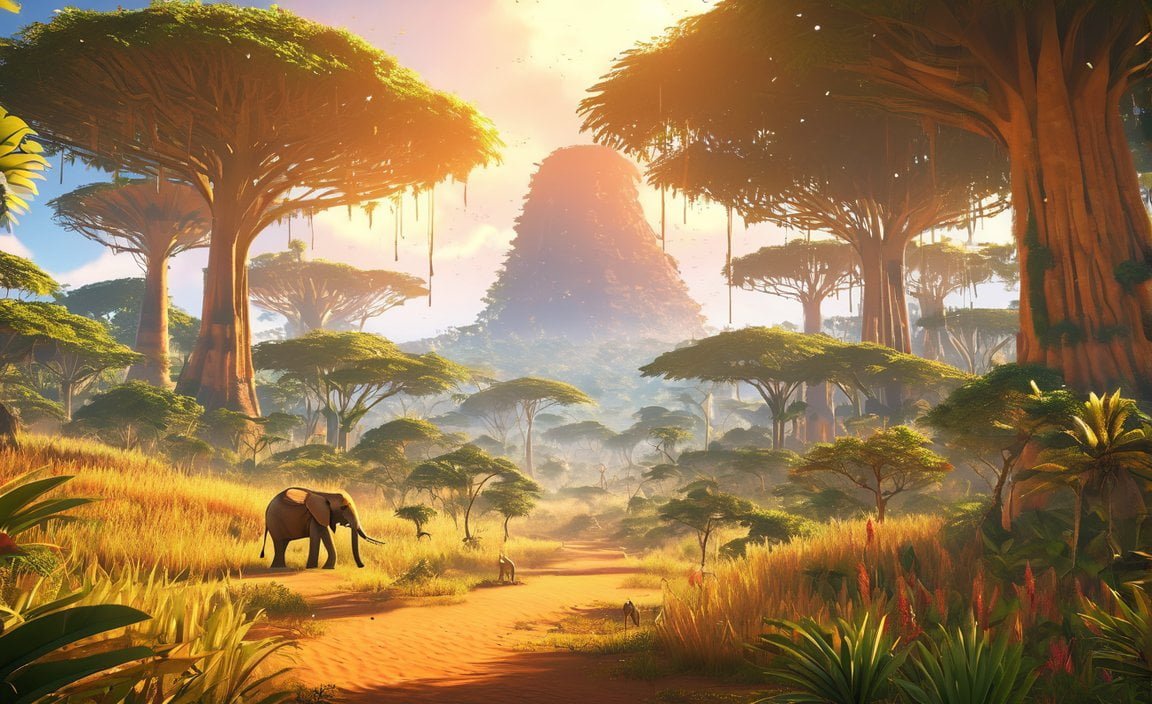
Key Takeaways:
- The tropical savanna biome is a unique blend of species and ecological traits, located in scattered regions with a climate that supports the growth of tall grasses, shrubs, and trees.
- Trees in the savanna biome, such as pine, palm, and acacia, have adaptations to withstand drought and poor soil conditions.
- Annual precipitation in the savanna biome ranges from 30 to 50 inches.
- The savanna biome is home to large herds of herbivorous animals like elephants, giraffes, zebras, wildebeests, and antelopes.
- Animals in the savanna biome have adapted with long legs, acute hearing and vision, and the ability to go without water for extended periods during the dry season.
- Habitat loss due to agriculture, grazing, and urbanization, climate change, and poaching are significant threats to savannas and its wildlife populations.
10 Interesting Facts about the Tropical Savanna Biome
The tropical savanna biome is a captivating ecosystem that showcases the incredible adaptability of its plants and animals. Let’s explore 10 intriguing facts about this unique and diverse biome.
1. The Savanna Biome: A Blend of Grasslands and Forests
The tropical savanna biome is a transitional zone between grasslands and forests, combining features of both. It is characterized by vast grassy plains with scattered trees and occasional shrubs. This unique blend of species and ecological traits creates a distinct and fascinating environment.
2. The Great Migration: Nature’s Marvel
One of nature’s most spectacular events occurs in the savanna biome – the Great Migration. It involves the massive movement of thousands of wildebeests, zebras, and other herbivores in search of fresh grazing lands and water. Witnessing this breathtaking journey is an experience like no other.
3. Resilient Trees in the Savanna
Trees in the savanna biome have developed remarkable adaptations to survive in harsh conditions. They are resistant to drought and poor soil, enabling them to thrive where other trees would struggle. Some common tree species in the savanna biome include pine, palm, and acacia.
4. Scattered Presence of the Savanna
The savanna biome is not confined to a specific geographical region. It is found scattered across tropical areas around the world, where the prevailing climate can support the growth of tall grasses, shrubs, and trees. This dispersion adds to the uniqueness of each savanna ecosystem.
5. Herds of Herbivorous Animals
One of the distinct features of savanna biomes is the presence of large herds of herbivorous animals. These herds include elephants, giraffes, zebras, wildebeests, and antelopes. They have adapted to the open grasslands by developing long legs, acute hearing, and vision to detect predators and navigate the vast plains.
6. Adaptations for Surviving the Dry Season
In the savanna biome, where water can be scarce during the dry season, animals have evolved incredible mechanisms to survive. They can go long periods without water, relying on their physiological and behavioral adaptations. These adaptations include the ability to conserve water and adjust their metabolic rate.
7. Threats to Savannas
Despite their resilience, savannas face significant threats from human activities. Habitat loss due to agriculture, grazing, and urbanization is a major concern. Climate change and poaching also pose significant threats to the wildlife populations in the savanna biome, necessitating conservation efforts.
8. Fire’s Role in Savanna Ecology
Fire plays a crucial role in shaping the savanna biome. It helps maintain the dominance of grasses while suppressing the growth of trees and shrubs. Many plants in the savanna biome have adapted to fire, developing thick barks, underground storage structures, or the ability to quickly regenerate after a fire.
9. Meeting Water Needs with Precipitation
The annual precipitation in the savanna biome ranges from 30 to 50 inches. While it may seem relatively low, this rainfall is sufficient to sustain the growth of tall grasses and support the diverse plant and animal life that thrives in the savanna.
10. Ecological Importance of the Savanna Biome
The savanna biome contributes significantly to the global ecosystem. It serves as a vital habitat for countless plant and animal species, playing a critical role in maintaining biodiversity. The savanna’s unique characteristics also help regulate regional climates and act as a natural carbon sink, aiding in the mitigation of climate change.
In conclusion, the tropical savanna biome is a captivating and diverse ecosystem with fascinating characteristics. From the incredible adaptations of plants and animals to the threats they face, there is much to discover and appreciate about this remarkable biome. Whether observing the Great Migration or marveling at the resilience of savanna trees, the tropical savanna biome never fails to amaze and inspire.
Here are some interesting facts about different biomes that you might find fascinating:
10 Interesting Facts about Temperate Deciduous Forest Biome – Did you know that temperate deciduous forests have trees that lose their leaves in the fall? Discover more amazing facts about this biome here!
10 Interesting Facts about the African Savanna Biome – Step into the fascinating world of the African savanna biome and learn about its diverse wildlife and vast grasslands. Click here to uncover these intriguing facts!
10 Interesting Facts about the Savanna – The savanna is an incredible ecosystem filled with unique plants and animals. Join us on a journey to explore the wonders of the savanna by clicking here!
10 Interesting Facts about the Savanna Biome – Curious to know more about the savanna biome? Click here to dive into the fascinating facts about this remarkable ecosystem!
10 Interesting Facts about the Temperate Deciduous Forest – Discover the enchanting world of the temperate deciduous forest and its majestic trees that change colors with the seasons. Click here for captivating facts about this biome!
10 Interesting Facts about Underwater Animals – Dive into the depths of the ocean and uncover amazing facts about underwater animals. Click here to explore the incredible diversity of marine life!
The Unique Adaptations of Plants in the Tropical Savanna Biome
The tropical savanna biome is a fascinating and diverse ecosystem, filled with unique adaptations that allow plants to thrive in harsh conditions. From deep-rooted systems to resistance against herbivores, these adaptations are essential for survival in this challenging environment. In this article, we will explore 10 intriguing facts about the unique adaptations of plants in the tropical savanna biome.
1. Water-Wise Strategies
Plants in the tropical savanna biome have evolved remarkable adaptations to survive the long dry season. One such adaptation is the development of deep root systems, allowing plants to tap into groundwater reserves. This access to underground water sources helps them endure prolonged periods of drought. Additionally, some plants, such as trees, have organs that can store water, providing a valuable resource during times of scarcity.
2. Dormancy and Rapid Growth
During dry periods, grasses in the savanna biome can go dormant, minimizing water loss and conserving energy. However, when the rains come, these grasses rapidly grow, taking advantage of the moisture to replenish their reserves and produce new shoots. This unique trait ensures their survival and allows for the quick recovery of vegetation in the savanna after periods of drought.
3. Defense Mechanisms
In the savanna biome, plants face constant pressure from an abundance of herbivores. To defend themselves, plants have developed various adaptations. Some have thorns or spines, which act as deterrents against browsing animals. Others produce toxic compounds or release chemicals that attract natural predators, effectively warding off potential herbivores. These defense mechanisms contribute to the plant’s ability to thrive in the presence of grazing animals.
4. Water Storage Abilities
The Acacia tree, a common plant in the tropical savanna biome, possesses a unique adaptation – the ability to store water in its trunk. This water storage system serves as a reserve during long dry periods, allowing the Acacia tree to survive and continue to provide shade and resources to the ecosystem.
5. Fire Resistance
Fire plays a crucial role in shaping the savanna ecosystem, and plants have adapted to tolerate and even benefit from it. Some plants have thick bark that protects their inner tissue from the heat of wildfires, while others have the ability to resprout from underground buds after a fire has passed. These adaptations ensure the survival and regeneration of plant life in the savanna landscape.
6. Drought-Tolerant Seeds
In anticipation of drought, some plant species in the tropical savanna biome have developed the ability to produce seeds that can withstand long periods without water. These drought-tolerant seeds can remain dormant for extended periods, waiting for the right conditions to germinate and grow. This adaptive strategy allows plants to maintain their populations and ensures their survival in this challenging environment.
7. Resource Allocation
The limited resources available in the savanna biome have shaped the reproductive strategies of plants. Many species allocate their resources to produce large quantities of small seeds rather than investing in fewer, larger seeds. This strategy increases the chances of successful germination and establishment, taking advantage of the unpredictable conditions of the savanna environment.
8. Flexibility in Photosynthesis
Plants in the tropical savanna biome have adapted their photosynthetic processes to cope with alternating wet and dry seasons. They exhibit a flexible strategy, known as C4 photosynthesis, which allows them to be efficient in capturing carbon dioxide from the atmosphere, even under hot and dry conditions. This unique adaptation enables plants to continue photosynthesizing and growing, despite the challenging environment.
9. Wind Dispersal
In the open grasslands of the savanna, wind plays a crucial role in plant reproduction. Many plant species have evolved adaptations that facilitate wind dispersal of their seeds. These adaptations include lightweight structures and structures that catch the wind, such as feathery appendages. By relying on wind dispersal, plants in the savanna increase their chances of colonizing new areas and successfully reproducing.
10. Collaboration with Animals
Plants in the tropical savanna biome have established intricate relationships with animals to ensure their survival and dispersal. Some plant species rely on specific animals, such as birds or mammals, to spread their seeds. They produce fruits or seed structures that are attractive to these animals, who consume them and then disperse the seeds through their droppings. This collaboration is essential for the long-term viability of plant populations in the savanna.
Key Takeaways:
- Plants in the tropical savanna biome possess unique adaptations to survive in harsh conditions.
- These adaptations include deep root systems, water storage abilities, and resilience against herbivores.
- Dormancy and rapid growth enable grasses to survive and thrive during the wet and dry cycles.
- Defense mechanisms, such as thorns and toxic compounds, protect plants from browsing herbivores.
- Fire resistance and the ability to resprout after wildfires ensure plant regeneration.
- Drought-tolerant seeds and resource allocation strategies contribute to plant survival.
- Flexible photosynthesis and wind dispersal mechanisms enhance the adaptability of plants.
- Collaboration with animals supports seed dispersal and reproductive success in the savanna biome.
Sources:
– Ask A Biologist: Savanna Plant Adaptations. (n.d.). Retrieved from
– Sciencing: Plants of the Tropical Savanna. (n.d.). Retrieved from
The Importance of Grazing Animals in Maintaining the Savanna Ecosystem
Savanna ecosystems are home to a diverse range of plant and animal species, and at the heart of these biomes lies a crucial relationship between grazing animals and the delicate balance of the ecosystem. In this article, we will explore the significance of grazing animals in maintaining the savanna ecosystem and uncover 10 intriguing facts about this unique biome.
Definition and Characteristics of Savanna Ecosystems
Savanna ecosystems are vast grasslands dotted with scattered trees, found in both temperate and tropical regions. These ecosystems can vary in wetness or dryness depending on the climate, and they play a vital role in supporting a rich variety of life forms.
Key Takeaways:
– Savannas are characterized by vast grasslands with scattered trees.
– They exist in both temperate and tropical regions.
– Savannas can vary in wetness or dryness depending on the climate.
The Role of Grazing Animals in Savanna Ecosystems
Grazing animals, such as wildebeests, zebras, antelopes, and elephants, play a crucial role in maintaining the delicate balance between woody plants and grasses in savannas. Their grazing behavior prevents grasses from becoming overgrown and suppresses the growth of woody plants.
Key Takeaways:
– Grazing animals maintain the balance between woody plants and grasses in savannas.
– They prevent grass overgrowth and suppress the growth of woody plants.
Effects of Grazing on Savanna Ecosystems
The grazing activities of these animals can lead to the creation of a mosaic landscape in savannas, with patches of shorter grasses. This promotes plant diversity and creates niches for a wide range of species. Additionally, grazing animals can influence fire regimes in savannas. Their grazing reduces fuel loads, making it harder for fires to spread.
Key Takeaways:
– Grazing animals create a mosaic landscape with patches of shorter grasses.
– They promote plant diversity and create niches for various species.
– Grazing animals can influence fire regimes by reducing fuel loads.
Interactions between Grazing Animals and Other Elements of the Ecosystem
Grazing animals have a significant impact on the competitive patterns between woody and herbaceous vegetation in savannas. They shape the structure and composition of these ecosystems through their interactions with plants and fire regimes. This intricate web of relationships is vital for the overall health and functioning of the savanna biome.
Key Takeaways:
– Grazing animals influence competitive patterns between woody and herbaceous vegetation.
– They shape the structure and composition of savanna ecosystems.
Threats to Savanna Ecosystems
Despite their ecological importance, savanna ecosystems face numerous threats from human activities. Logging, development, conversion to agriculture, overgrazing by livestock, and the introduction of non-native plant species all disrupt the delicate balance between grazing animals, plants, and fires in savannas.
Key Takeaways:
– Savannas are threatened by human actions such as logging, development, and overgrazing.
– These threats disrupt the delicate balance of the savanna ecosystem.
Conservation Efforts for Savanna Ecosystems
Efforts to conserve savanna ecosystems should prioritize preserving the habitats of grazing animals and promoting sustainable grazing practices. Restoration and maintenance of fire regimes are also crucial for the conservation of these ecosystems. By protecting the intricate balance of the savanna biome, we can ensure the survival of its unique flora and fauna.
Key Takeaways:
– Conservation efforts for savanna ecosystems focus on preserving grazing animal habitats and promoting sustainable grazing practices.
– Restoring and maintaining fire regimes is crucial for savanna conservation.
Conclusion
The tropical savanna biome is a captivating ecosystem where grazing animals play a vital role in its overall health and functioning. By preventing overgrowth, promoting plant diversity, shaping fire regimes, and interacting with other elements of the ecosystem, these animals are essential for maintaining the delicate balance of the savanna. Understanding and appreciating the importance of grazing animals in the savanna ecosystem allows us to protect and conserve these remarkable biomes for future generations.
Key Takeaways:
- Savanna ecosystems are characterized by vast grasslands with scattered trees, found in both temperate and tropical regions.
- Grazing animals maintain the balance between woody plants and grasses in savannas, preventing overgrowth and promoting plant diversity.
- Their grazing behavior influences fire regimes by reducing fuel loads, making it harder for fires to spread.
- Grazing animals shape the structure and composition of the savanna ecosystem through their interactions with plants and fire regimes.
- Savanna ecosystems face threats from human activities, such as logging, development, overgrazing, and the introduction of non-native species.
- Conservation efforts should prioritize preserving grazing animal habitats, promoting sustainable grazing practices, and restoring fire regimes.
Sources:
- JSTOR: “Impact of Grazing in Savanna Ecosystems”
- Earth Reminder: “Savanna Ecosystem: Characteristics, Animals & Plants”
The Remarkable Migratory Patterns of Birds in the Tropical Savanna
The tropical savanna biome is a fascinating ecosystem that covers approximately 20% of the world’s surface. While it is known for its grass-dominated landscapes with scattered trees and shrubs, one of the most captivating aspects of this biome is the remarkable migratory patterns of birds. Let’s delve into this awe-inspiring phenomenon and discover some intriguing facts.
Key Takeaways:
- The tropical savanna is home to a diverse array of bird species, with a total of 2,951 species found in this biome[^1].
- Three bird species, the Cattle Egret, Barn Swallow, and Osprey, are common to all tropical savannas[^1].
- These birds undertake incredible journeys, traversing vast distances and encountering various challenges along the way.
1. The Epic Journeys Begin: Migration Patterns Start
Bird migration in the tropical savanna is a truly remarkable spectacle. It is a testament to the astonishing adaptability and resilience of these avian travelers. Each year, millions of birds embark on long and arduous journeys in search of suitable breeding grounds, favorable climates, and abundant food sources. They navigate vast distances, sometimes crossing entire continents and even oceans.
2. Timing is Everything: Seasonal Movements
The migratory patterns of birds in the tropical savanna are driven by the changing seasons. As the dry season gives way to the wet season, and vice versa, these birds instinctively sense the need to move to areas that offer optimal conditions for survival and reproduction. Their movements are synchronized with the availability of food, nesting opportunities, and favorable weather patterns.
3. Overcoming Challenges: Hazards and Adversities
Migratory birds face numerous challenges during their journeys through the tropical savanna. They encounter natural barriers such as mountains, deserts, and oceans, which they must navigate with precision. Additionally, they must contend with adverse weather conditions, including storms and strong winds. Despite these obstacles, they possess remarkable navigational abilities and utilize cues from the sun, stars, and Earth’s magnetic field to guide their way.
4. The Power of Instinct: Precision in Route Selection
It is astonishing how migratory birds can find their way across vast distances, often returning to the same breeding grounds year after year. They follow specific routes known as flyways, which serve as highways in the sky. Along these flyways, they rely on distinct landmarks, topography, and even wind patterns to guide their journey. This instinctual navigation ensures they arrive safely at their desired destinations.
5. The Circle of Life: Breeding and Nesting in the Tropical Savanna
The tropical savanna provides an ideal breeding ground for many migratory bird species. The abundance of food, suitable habitat, and favorable conditions contribute to successful reproduction. Nest-building, courtship displays, and raising offspring are all crucial stages in the life cycle of these birds. The tropical savanna becomes a bustling hub of activity during the breeding season, as birds engage in elaborate mating rituals and compete for mates.
6. Conservation Concerns: Protecting Migratory Birds and Their Habitat
Migratory birds in the tropical savanna face numerous threats that endanger their survival. Habitat loss due to deforestation, urbanization, and agriculture poses a significant challenge. Climate change also disrupts the delicate balance of the savanna ecosystem, affecting food availability and altering weather patterns. Furthermore, the spread of invasive species and the illegal wildlife trade further endanger these remarkable avian travelers.
7. Intrinsic Value and Ecological Significance: The Role of Birds in the Savanna
The migratory patterns of birds in the tropical savanna hold immense ecological significance. As they journey between different regions, these birds act as vital pollinators, seed dispersers, and biological indicators of ecosystem health. Their presence and movements contribute to the maintenance of biodiversity and help shape the savanna’s intricate web of life.
Migratory birds play a crucial role in the health and vitality of the tropical savanna ecosystem[^1]. Understanding and protecting their migratory patterns is essential for preserving the delicate balance of this unique biome for future generations.
So, next time you gaze upon the vast expanse of the tropical savanna, remember the incredible journeys that birds undertake to call this awe-inspiring biome their home.
Key Takeaways:
- The tropical savanna is home to a diverse array of bird species, with a total of 2,951 species found in this biome.
- Three bird species, the Cattle Egret, Barn Swallow, and Osprey, are common to all tropical savannas.
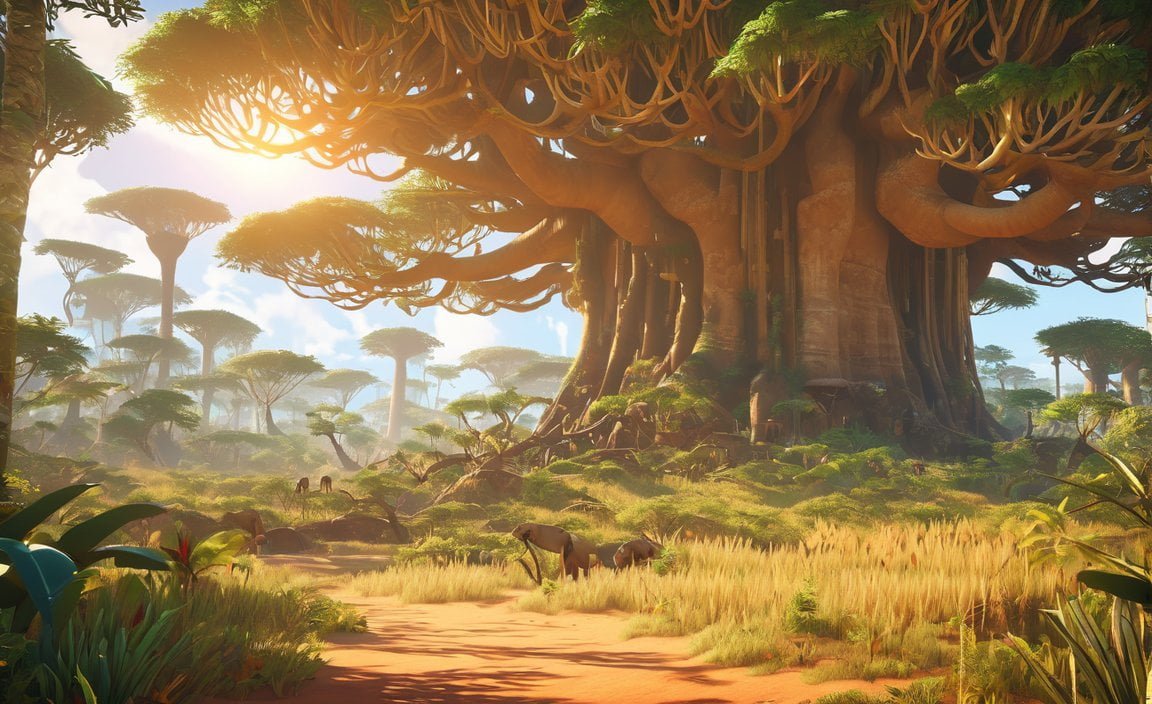
FAQ
Q1: What is a savanna ecosystem?
A1: A savanna ecosystem is characterized by vast grasslands with scattered trees and shrubs. It can be found in both temperate and tropical regions and can be wet or dry depending on the climate.
Q2: What role do grazing animals play in savanna ecosystems?
A2: Grazing animals play a critical role in maintaining the balance between woody plants and grasses in savannas. They prevent grasses from becoming overgrown and suppress the growth of woody plants. They also contribute to nutrient cycling and seed dispersal in these ecosystems.
Q3: How do grazing animals affect the landscape of savanna ecosystems?
A3: Grazing animals can create a mosaic landscape by creating patches of shorter grasses and promoting plant diversity. They can also influence fire regimes in savannas, as their grazing can reduce fuel loads and prevent the spread of fires.
Q4: What threats do savanna ecosystems face?
A4: Savannas are threatened by human actions such as logging, development, conversion to agriculture, overgrazing by livestock, and the introduction of non-native plant species. These threats can disrupt the delicate balance between grazing animals, plants, and fires in savannas.
Q5: How can savanna ecosystems be conserved?
A5: Conservation efforts for savanna ecosystems should focus on preserving the habitats of grazing animals and promoting sustainable grazing practices. It is also crucial to restore and maintain fire regimes in savannas for their conservation.
